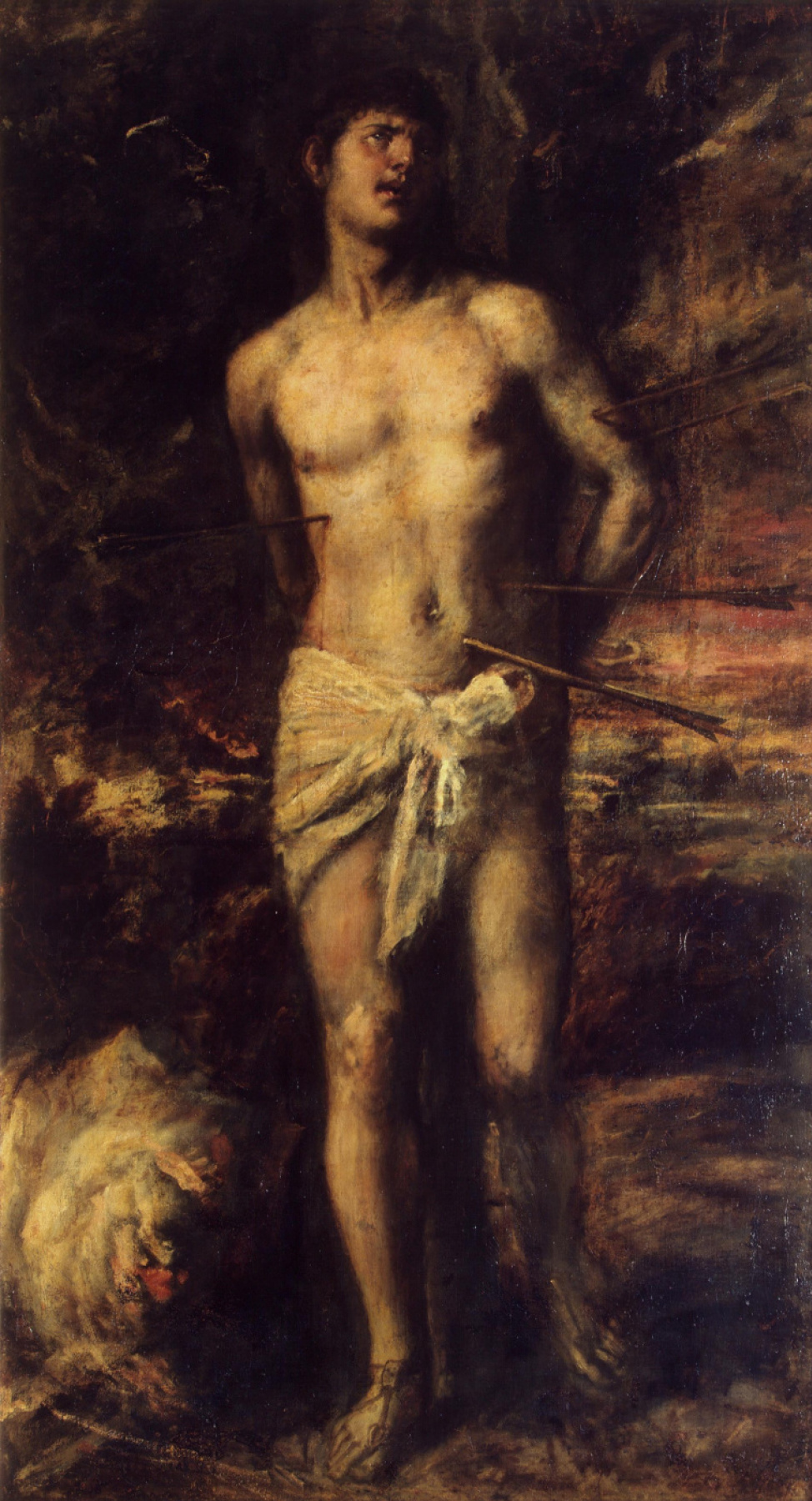log in
Enter site
Login to use Arthive functionality to the maximum
Saint Sebastian
Titian Vecelli • 绘画, 1570-第
, 210×115.5 厘米
画作描述 «Saint Sebastian»
One of the last paintings by Titian, "Saint Sebastian" (1570-1572) now is the pearl of the Hermitage, got there in the mid 1850-ies of the family meeting dynasty Barbarigo. In 1585, the year, nearly a decade after the painter's death, the son of Titian, Pomponio sold his father's house along with all contained therein movable and immovable property there is no one Cristoforo of Padua of a noble kind Barbarigo. Part of that wholesale transactions were and such a masterpiece as "Saint Sebastian".
The legend of Saint Sebastian
In the Basilica of St. Sebastian, located in the heart of the ancient catacombs of Rome, the relics of the legionary captain of the Roman archers, which for firmness in the confession of faith was recognized by the Catholic Church of the Holy Ghost. Sebastian secretly converted to Christianity and is attached to the other of the Gentiles. For this, Emperor Diocletian appointed a terrible penalty: Legionnaire tied to a tree and archers of his cohort had to put in Sebastian's arrows, until he will become, in the words of one Dominican monk, "in the likeness of a porcupine". The life says that after that torture Sebastian survived, but was re-sentenced to death by stoning. His mutilated body was found in a roadside ditch Saint Lucia and buried near the Appian way.
Artistic originality of a picture of Titian's "Saint Sebastian"
In a sense, "Saint Sebastian" is the result of creative searches of Titian as the greatest colorist. Titian thinks not lines, not volumes and masses of light and shade or the proportions, like the other artists, he plays the world and recreates the form only colors, using the color and tonal relationships. The subtle reflexes of yellow, pink, brown allow for the transfer of the breath and the thrill of living and suffering of the flesh. The alarming color of the picture, where the night is lit by the flames, throwing on the body of the Martyr capricious shaking reflections, and the gloomy apocalyptic earth merges with the black sky allowed the critics to see in this dark canvas, "a true Symphony of color."
Interestingly, if in the early and Mature periods of art Titian the main carrier of color performed tissue and interiorin the later period the main relay a colorful sound is the human body, vulnerable and beautiful in its nakedness.
The pose of Sebastian tied to a tree, but not broken, not lost dignity and even in the face of impending death is not attractivea of Christ, expresses the profound faith of Titian in the resilience of the human spirit.
Author: Anna Yesterday
The legend of Saint Sebastian
In the Basilica of St. Sebastian, located in the heart of the ancient catacombs of Rome, the relics of the legionary captain of the Roman archers, which for firmness in the confession of faith was recognized by the Catholic Church of the Holy Ghost. Sebastian secretly converted to Christianity and is attached to the other of the Gentiles. For this, Emperor Diocletian appointed a terrible penalty: Legionnaire tied to a tree and archers of his cohort had to put in Sebastian's arrows, until he will become, in the words of one Dominican monk, "in the likeness of a porcupine". The life says that after that torture Sebastian survived, but was re-sentenced to death by stoning. His mutilated body was found in a roadside ditch Saint Lucia and buried near the Appian way.
Artistic originality of a picture of Titian's "Saint Sebastian"
In a sense, "Saint Sebastian" is the result of creative searches of Titian as the greatest colorist. Titian thinks not lines, not volumes and masses of light and shade or the proportions, like the other artists, he plays the world and recreates the form only colors, using the color and tonal relationships. The subtle reflexes of yellow, pink, brown allow for the transfer of the breath and the thrill of living and suffering of the flesh. The alarming color of the picture, where the night is lit by the flames, throwing on the body of the Martyr capricious shaking reflections, and the gloomy apocalyptic earth merges with the black sky allowed the critics to see in this dark canvas, "a true Symphony of color."
Interestingly, if in the early and Mature periods of art Titian the main carrier of color performed tissue and interiorin the later period the main relay a colorful sound is the human body, vulnerable and beautiful in its nakedness.
The pose of Sebastian tied to a tree, but not broken, not lost dignity and even in the face of impending death is not attractivea of Christ, expresses the profound faith of Titian in the resilience of the human spirit.
Author: Anna Yesterday



